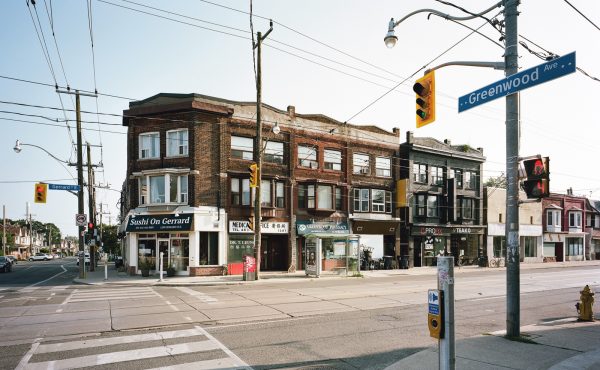 The other day CBC Radio One came to our OCAD “Activate the Park” event to do a live spot for Here and Now. The producer came in a CBC Minivan that had this big portable broadcast box in it that looked like it was from the 1970s. There was an antenna on top of the van too. We had to talk to Matt Galloway using the mic, but heard his voice (and ours) through a cell phone that was patched into the CBC board. There was a split second of delay though, making it feel like all our words were stuck in thick glue.
The other day CBC Radio One came to our OCAD “Activate the Park” event to do a live spot for Here and Now. The producer came in a CBC Minivan that had this big portable broadcast box in it that looked like it was from the 1970s. There was an antenna on top of the van too. We had to talk to Matt Galloway using the mic, but heard his voice (and ours) through a cell phone that was patched into the CBC board. There was a split second of delay though, making it feel like all our words were stuck in thick glue.
While one of my students was speaking to Matt in the studio, I asked the producer if it just beams it straight back to the mothership. He pointed down McCaul to the CN Tower and said it goes there first, then down to the CBC.
For some reason I was really happy that the CN Tower still gets used for its original purpose like that. I knew it still broadcasts TV and Radio stations, but didn’t know it had such small scale uses like this. So it has utility on top of the mythic, tourist and landmark roles it plays for us.
Yesterday Amy Lavender Harris, on her blog Imagining Toronto: Intersections of Literature and Place in the Toronto Region, wrote about how it’s our own Tower of Babel, and lists off a bunch of places where it’s surfaced in literature.
Originally built as a telecommunications tower and symbol of technological, architectural, and economic dominance, it rises above the city and both divides and connects us. Although we turn our backs on it, the CN Tower remains a sly presence in our photographs, memories, and narratives. It is always there, in the corner of our gaze. It is far from mute, and as a symbol it is far from stale. Indeed, Toronto writers continually appropriate the CN Tower in order to reinvent it as the site of resistance, memory, longing, and possibility.
It’s thirty-years-old now, and after all these years is about to be topped by some new towers in other cites. But for Toronto, it’s still ever so useful to navigate through the city, literally or literature-ly. I often wonder what would happen if it just suddenly disappeared, then Darren O’Donnell wrote Your Secrets Sleep With Me, and wondered the same thing. I suppose New Yorkers have been adjusting to this effect for the last 4 years or so.

